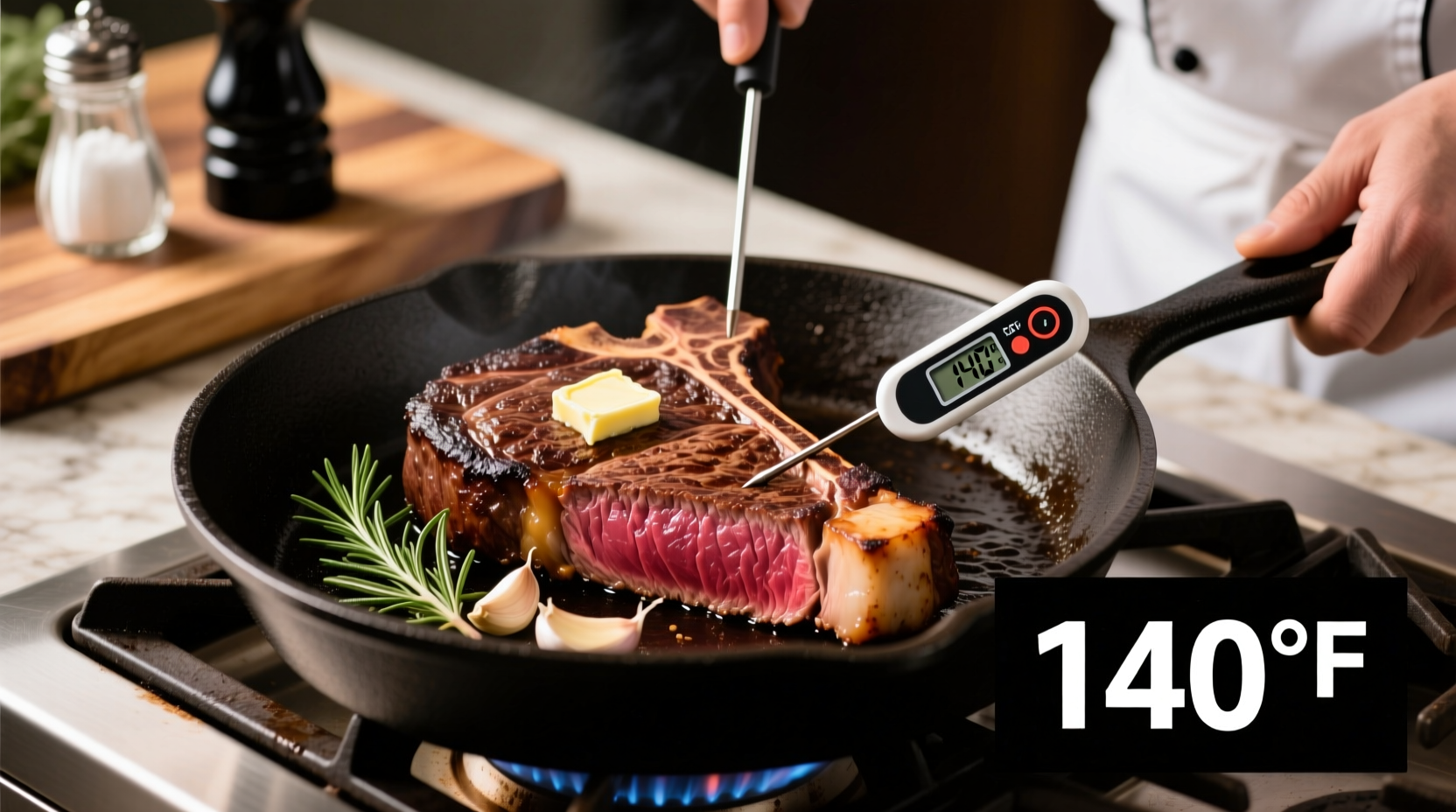Perfectly cook a medium well steak on stove in 20 minutes: Bring 1-1.5 inch thick steak to room temperature, season generously, sear in smoking hot cast iron skillet 3-4 minutes per side, finish in 400°F oven 4-6 minutes until internal temperature reaches 145°F, then rest 5-10 minutes. This method delivers a warm pink center with slight browned areas, juicy texture, and flavorful crust every time.
Nothing beats a perfectly cooked steak made right in your kitchen. While many home cooks struggle with stove-top steak preparation, achieving medium well doneness—that ideal balance between safety and flavor—is completely within reach with the right technique. Forget dry, overcooked results; this professional method ensures a warm pink center with just a hint of browned areas, maintaining juiciness while reaching safe internal temperatures.

Essential Preparation Before Cooking
Proper preparation sets the stage for steak success. Start with a quality cut like ribeye, strip, or filet mignon between 1-1.5 inches thick—thinner cuts overcook too quickly on stove. Remove steak from refrigerator 45-60 minutes before cooking to reach room temperature, ensuring even cooking. Pat the surface completely dry with paper towels; moisture is the enemy of proper searing.
Season generously with coarse kosher salt and freshly ground black pepper at minimum. For enhanced flavor, add garlic powder or smoked paprika. Professional chefs recommend seasoning at least 40 minutes before cooking to allow salt to penetrate the meat. Prepare your mise en place: tongs, meat thermometer, and aluminum foil for resting.
Stovetop Cooking Process Step-by-Step
Choose heavy-bottomed cookware like cast iron or carbon steel skillet—these retain heat best for proper searing. Preheat your empty skillet over medium-high heat for 5-7 minutes until it's nearly smoking. Add high smoke point oil like avocado or grapeseed oil (1-2 tablespoons), swirling to coat the surface.
Place steak in the hot skillet away from you to prevent oil splatter. You should hear an immediate sizzle. Cook undisturbed for 3-4 minutes to develop a deep brown crust. Resist the urge to move or press down on the steak. Flip once using tongs and sear the other side for another 3-4 minutes.
| Doneness Level | Internal Temperature | Visual Characteristics |
|---|---|---|
| Medium Rare | 130-135°F | Warm red center, soft texture |
| Medium | 135-140°F | Warm pink center, slightly firm |
| Medium Well | 145°F | Warm pink center with browned areas, firm texture |
| Well Done | 155°F+ | Little or no pink, very firm |
Finishing and Temperature Control
For thicker cuts (over 1.5 inches), transfer the skillet directly to a preheated 400°F oven after initial searing. This gentle oven finish prevents burnt exteriors while allowing the interior to reach proper medium well temperature. Check internal temperature with an instant-read thermometer inserted horizontally into the thickest part.
The USDA Food Safety and Inspection Service recommends a minimum internal temperature of 145°F for steaks, followed by a 3-minute rest period. For medium well specifically, remove steak from heat at 140°F as carryover cooking will raise the temperature 5 degrees during resting. This precise temperature control prevents the common mistake of overcooking that leads to dry, tough steak.
Resting: The Critical Final Step
Transfer cooked steak to a cutting board or warm plate, tent loosely with foil, and rest for 5-10 minutes. This crucial step allows juices to redistribute throughout the meat. Cutting too soon releases precious juices onto your plate rather than staying within the steak. The American Culinary Federation emphasizes that proper resting time equals approximately 1 minute per 100 grams of meat.
During resting, the internal temperature will continue to rise slightly (carryover cooking), which is why you remove the steak from heat just before reaching your target temperature. For medium well steak, this carryover cooking is essential to achieve that perfect slightly browned pink center without overcooking.
Troubleshooting Common Stove Cooking Issues
Burnt exterior, raw interior: Your pan wasn't hot enough before adding steak. Proper searing requires a smoking hot surface to create an immediate crust that protects the interior.
Steak sticking to pan: This happens when you try to flip too soon. Allow the initial sear to form (3-4 minutes) before attempting to move the steak. Proper preheating and dry meat surface prevent sticking.
Inconsistent results: Invest in an instant-read thermometer—don't rely solely on timing. Variables like steak thickness, starting temperature, and stove heat output affect cooking time. The Culinary Institute of America confirms that thermometers eliminate guesswork for perfect doneness.
When This Method Works Best
This stove-to-oven technique excels with steaks 1-2 inches thick. For thinner cuts under 1 inch, reduce stovetop time to 2-3 minutes per side and skip the oven finish. The method works best in home kitchens without specialized equipment—no need for sous vide or specialized steak appliances.
Consider your cooking environment: gas stoves typically provide more consistent high heat than electric, but both work with proper preheating. In high-altitude locations, you may need slightly longer cooking times as water boils at lower temperatures, affecting heat transfer.
Professional Tips for Steak Perfection
Add flavor complexity by incorporating aromatics during the final minute of cooking: place a tablespoon of butter, 2 crushed garlic cloves, and fresh thyme sprigs in the skillet. Tilt the pan and spoon the melted butter continuously over the steak for basting.
For optimal crust development, avoid overcrowding the pan—cook one steak at a time in standard home skillets. If cooking multiple steaks, keep finished ones warm in a 200°F oven while preparing others. Never pierce the steak with a fork while cooking, as this releases precious juices.











 浙公网安备
33010002000092号
浙公网安备
33010002000092号 浙B2-20120091-4
浙B2-20120091-4